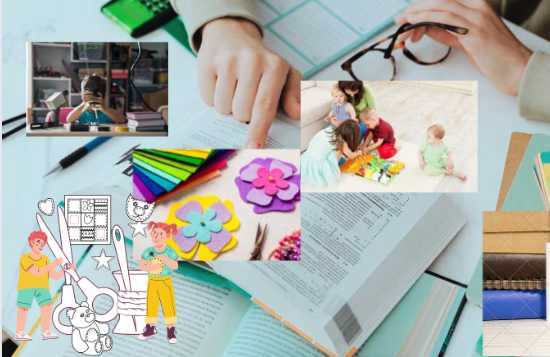Creating a personalized syllabus for your DIY learning journey can greatly enhance your ability to learn efficiently and effectively. Here’s a step-by-step guide to help you create your own personalized syllabus: In the below article, I made a very easy-to-understand DIY learning tool.
What is DIY learning?
DIY learning, also known as self-directed learning, is the process of gaining information and skills via self-directed activities and projects. It often incorporates hands-on experimentation and inquiry, with no formal training or typical classroom settings required. DIY learning enables people to take an active part in their education, which fosters creativity, problem-solving skills, and a feeling of empowerment. This method enables a customized and adaptable learning experience based on individual interests and objectives.
The Best Resources for DIY Learning
Step 1: Define Your Learning Goals
Before you begin, it’s essential to understand what you want to achieve. Clearly define your learning objectives and goals. Ask yourself questions like:
- What skills or knowledge do I want to acquire?
- Why am I pursuing this learning journey?
- How will I measure my progress and success?
Step 2: Identify Learning Resources
Research and gather resources that align with your learning goals. These resources can include:
- Books
- Online courses and tutorials
- Videos (YouTube, educational platforms)
- Blogs and articles
- Podcasts
- Forums and online communities
Make sure to select resources that suit your learning style and level of expertise. Mix and match different types of resources to gain a comprehensive understanding.
Step 3: Organize Your Learning Path
Break down your learning journey into smaller, more manageable chunks. Create a sequence of topics or modules that build on each other. Organize your chosen resources according to these modules. This will give you a clear roadmap to follow.
Step 4: Set a Timeline
Set a realistic timeline for each module or topic. Consider factors like the complexity of the material, your available time, and any external commitments. Be flexible with your timeline, but also strive to maintain a consistent pace to ensure steady progress.
Step 5: Monitor and Adjust
Regularly monitor your progress. Are you keeping up with your timeline? Are you grasping the concepts? Do you need more time on certain topics? Be honest with yourself. Adjust your timeline or resources as needed. Learning is a dynamic process, so don’t hesitate to make changes based on your experiences.
Bonus Step: Reflect and Apply
Throughout your learning journey, take time to reflect on what you’ve learned. Consider how you can apply the knowledge or skills in real-life situations. This reflection will deepen your understanding and make the learning experience more meaningful.
Read this: Online Learning in 2024: What to Expect and How Does It Work?
FAQs About DIY Learning
1. What does DIY learning mean?
DIY learning refers to the practice of acquiring knowledge and skills through self-directed, hands-on activities and projects, often without formal instruction or traditional classroom settings.
2. What are the benefits of DIY learning?
DIY learning can empower individuals to take control of their own education, foster creativity and problem-solving skills, and provide a more personalized and flexible approach to learning.
3. How can I start with DIY learning?
To start with DIY learning, you can identify a topic or skill you’re interested in, gather relevant resources such as books, online tutorials, and materials, and then begin experimenting and practicing on your own.
4. Is DIY learning suitable for everyone?
DIY learning can be suitable for individuals of all ages and backgrounds, as it allows for a customized learning experience that can cater to different learning styles and preferences.
5. Are there any specific tools or platforms for DIY learning?
There are numerous tools and platforms available for DIY learning, including online courses, instructional videos, forums, and maker spaces, which provide access to resources and a community of like-minded learners.
Remember, DIY learning is all about taking initiative and being proactive in your pursuit of knowledge and skills.
